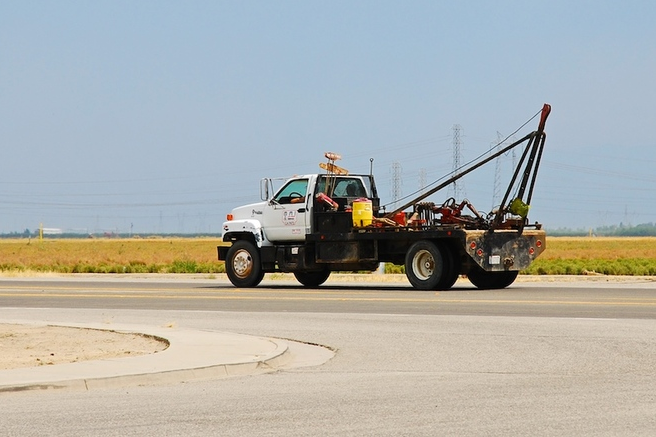Flatbed Towing vs. Dolly Towing
You’ve likely seen both the flatbed and dolly systems of towing, even if just in passing as you observed cars being moved through the city. You may not have registered though what you were seeing. What are the differences? If you call for a tow truck and one or the other arrives, would you know which is better for your vehicle or in a given situation?
Flatbed
You’ve seen a variation of flatbed towing if you’ve ever seen new cars loaded on a truck on their way to a dealership. Riding along like this, the cars don’t incur any mileage, there is no wear on the tires, and the cars aren’t subject to the same splashing through puddles or driving through dirt that a car being driven would be. The same is true of a flatbed tow.
With a car sitting on a flatbed, and securely anchored, there is no pull on the car’s frame, no uneven weight distribution, no extra tire wear and no worry about your car being subject to any pot holes or bumps in the road the tow driver may miss noticing.
There has been an increase in the uptake of flatbed towing in recent years because of the safety factor and advantages to vehicles.
Dolly Towing
With doll towing, the car is pulled behind the tow truck while two of its wheels are elevated, generally the front wheels, although depending on the vehicle, it could be the rear.
This kind of towing generally requires lower speeds and is only suitable for less heavy vehicles. Because the equipment required for this kind of tow is less expensive and there is less of an impact on fuel consumption for the tow vehicle, dolly towing can be a more economical option.
Dolly towing can also be a better option where space is an issue because flatbeds will require more room to manoeuver to get the vehicle loaded, while a truck with a dolly system can get into tighter spaces.
When to choose which
If your vehicle is smaller – not an SUV or truck – and your end destination is within the city and not very far away, a dolly tow may be just fine.
If, however, your vehicle is four-wheel drive, is a heavier model, is a vintage or classic model, or needs to be towed any kind of distance, the flatbed option is the safest and will ensure your vehicle gets from point A to point B without any indident.
It’s a good idea to check with your insurance company when you renew your policy – instead of trying to reach them when you’re stuck on a roadway somewhere in need of assistance – to see how much they will cover in tow fees and to understand what that will cover.
It’s also a good idea, as a preventative measure, to look up a few local tow companies now, to figure out who has which options, which has the complete range of services that might be required, and to have their number somewhere in your car for that just in case, hope you never need it moment.



